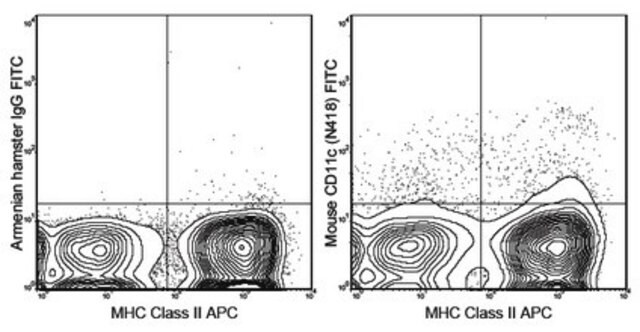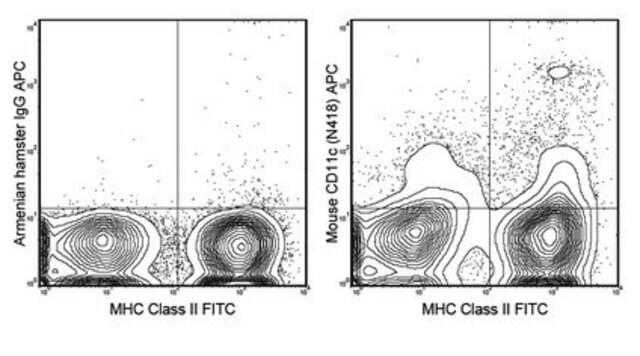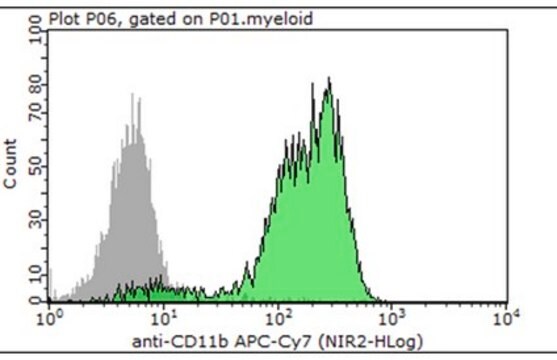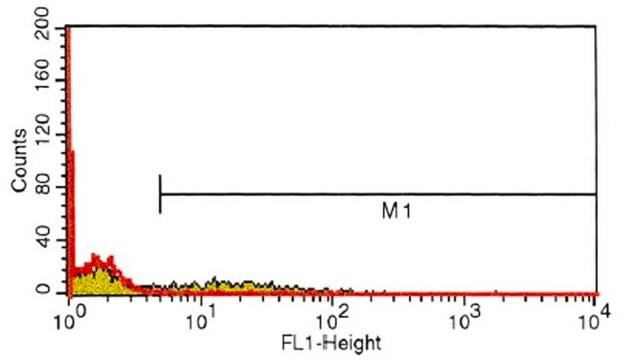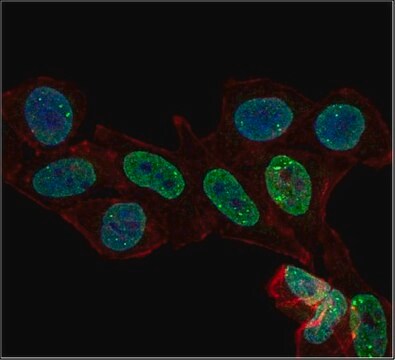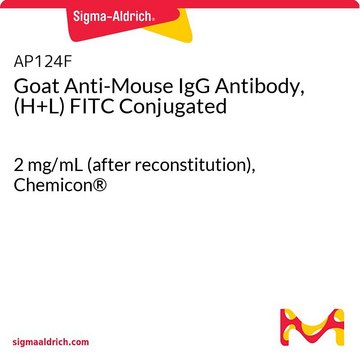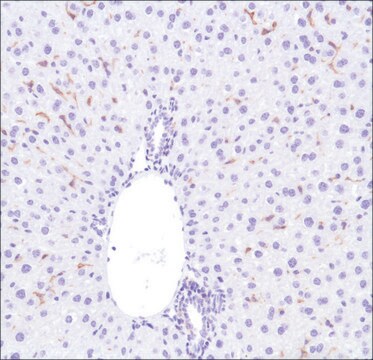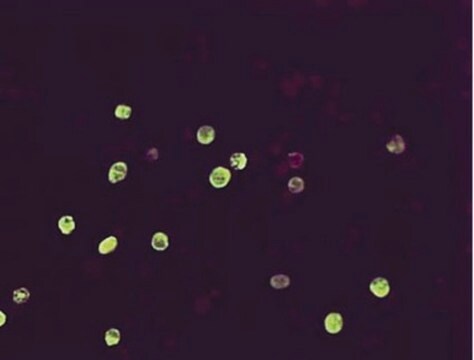MABF150A
Przeciwciało anty-CD11c (mysz), 10819 710, klon N418
clone N418, from hamster(Armenian), redFluor® 710
Synonim(y):
Integrin alpha-X, CD11 antigen-like family member C, Leukocyte adhesion glycoprotein p150,95 alpha chain, Leukocyte adhesion receptor p150,95, CD11c, CD11c
About This Item
Polecane produkty
pochodzenie biologiczne
hamster (Armenian)
Poziom jakości
białko sprzężone
redFluor® 710
forma przeciwciała
purified antibody
rodzaj przeciwciała
primary antibodies
klon
N418, monoclonal
reaktywność gatunkowa
mouse
opakowanie
antibody small pack of 25 μg
metody
flow cytometry: suitable
izotyp
IgG
numer dostępu UniProt
docelowa modyfikacja potranslacyjna
unmodified
informacje o genach
mouse ... Itgax(16411)
Opis ogólny
Immunogen
Zastosowanie
Inflammation & Immunology
Immunoglobulins & Immunology
Jakość
Flow Cytometry Analysis: 0.125 μg from a representative lot detected CD11c in one million C57Bl/6 splenocytes.
Postać fizyczna
Przechowywanie i stabilność
Uwaga: Zaleca się przechowywanie nierozcieńczonego produktu w temperaturze 2-8°C i chronienie go przed długotrwałym działaniem światła. Nie zamrażać.
Inne uwagi
Informacje prawne
Oświadczenie o zrzeczeniu się odpowiedzialności
Nie możesz znaleźć właściwego produktu?
Wypróbuj nasz Narzędzie selektora produktów.
Kod klasy składowania
12 - Non Combustible Liquids
Klasa zagrożenia wodnego (WGK)
nwg
Temperatura zapłonu (°F)
Not applicable
Temperatura zapłonu (°C)
Not applicable
Certyfikaty analizy (CoA)
Poszukaj Certyfikaty analizy (CoA), wpisując numer partii/serii produktów. Numery serii i partii można znaleźć na etykiecie produktu po słowach „seria” lub „partia”.
Masz już ten produkt?
Dokumenty związane z niedawno zakupionymi produktami zostały zamieszczone w Bibliotece dokumentów.
Nasz zespół naukowców ma doświadczenie we wszystkich obszarach badań, w tym w naukach przyrodniczych, materiałoznawstwie, syntezie chemicznej, chromatografii, analityce i wielu innych dziedzinach.
Skontaktuj się z zespołem ds. pomocy technicznej